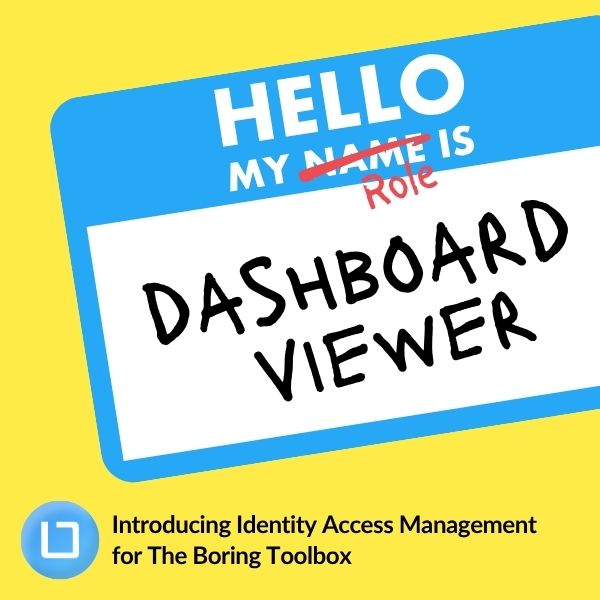
Managing over 240 cameras across a growing city isn’t easy—especially when one person is responsible for it all. See how...
If you’ve been managing your workplace’s video security system, you might have noticed that the default camera names lack… imagination. This can be especially challenging for system administrators in the healthcare industry managing hundreds or even thousands of cameras across diverse locations. From hospital corridors and wards to entrances and exits, generic identifiers like “Camera 1” and “Camera 296” often lead to chaos and confusion.
Instead of spending your afternoon trying to find a camera in a haystack, do your future self a solid and proactively update your camera names to follow a logical, consistent, and meaningful camera system that includes relevant information. When you and your team can effortlessly locate specific cameras, your security operations will be running more smoothly and efficiently than ever before.
From a low level, having a logical naming convention for your cameras makes it easier for you to search your system to find a specific camera.
From a high level, being able to easily locate specific camera devices is important because it makes processes for managing and navigating your system more simple and straightforward.
That means that you can do your job more efficiently but also, someone on your team could step in and help if you ever wanted to, say, take a vacation.

Dare to dream, my friend. Dare to dream.
Before your start planning your island getaway, there are a few more things you need to consider because you work in a healthcare setting.
Data privacy is always important when managing a video security system but HIPAA regulations create another level of complexity for you.
When naming your cameras, they should not inadvertently reveal sensitive information that would potentially violate HIPAA or other privacy guidelines. A well-thought-out naming system improves overall usability without sacrificing privacy
As we set out to create a logical and meaningful camera naming system, it’s essential to consider some unique factors relevant to healthcare settings:
Consistency in the naming convention is key. Every device should be named according to a set pattern that is easy to understand, to support effective security management, ease troubleshooting efforts, and maintain system-wide uniformity.
Inconsistency can lead to confusion and can slow down system management, troubleshooting, or upgrades.
If you’re using different types of cameras – indoor, outdoor, panoramic, PTZ (Pan-Tilt-Zoom), the naming convention should reflect this. This distinction aids in system maintenance and troubleshooting. Likewise, cameras assigned to specific functions like license plate recognition or facial recognition should be clearly labeled.
In a hospital, the video surveillance system might need to interact with other systems, like access control or patient monitoring systems. The naming convention should facilitate such interoperability.
In healthcare settings, certain areas may be subject to stricter privacy regulations (such as patient rooms or sensitive data storage areas). The camera naming convention should not inadvertently reveal sensitive information or violate any privacy guidelines. We will dig into this more below.
The naming convention should be scalable. If a hospital expands its security system by adding more cameras or new locations, the existing naming convention should be able to accommodate these additions without requiring a significant overhaul.
Sometimes, non-technical staff like security personnel may need to work with the system. The naming convention should be intuitive enough that even non-technical people can understand the basics.
Healthcare facilities often have to comply with regulatory requirements related to video surveillance. Check your audit rules to make sure your naming conventions follow a pattern that will streamline this process should you ever be audited.
A naming convention might also include a method to flag cameras that are offline, under maintenance, or experiencing other issues. This system makes it easier to identify and address problems swiftly.
In case of a system crash or a disaster, a well-designed naming convention can make the system restoration process much smoother.
When it comes to naming your cameras, it’s crucial to be mindful of privacy concerns to avoid inadvertently violating HIPAA or other privacy guidelines. Here are some general guidelines to follow:
Under no circumstances should camera names include patient-specific information such as names, medical record numbers, or any other personally identifiable information (PHI or also referred to as PII or Personally Identifiable Information). For instance, naming a camera “Room 205 – John Doe” would clearly violate privacy regulations.
While it’s important to include location references for cameras, be cautious not to provide overly specific information that could potentially identify sensitive areas. For instance, avoid using names of specialized units, treatment rooms, or any other spaces where patients receive sensitive care. Instead, opt for more general identifiers like “Patient Corridor” or “General Waiting Area.”
In certain areas of a healthcare facility, such as psychiatric units or confidential data storage rooms, additional privacy measures may be required. Be mindful of these areas and avoid naming cameras in a way that could inadvertently reveal their presence or compromise the privacy of individuals within those spaces.
Instead of naming cameras based on specific functions or targets, use more generic descriptions that don’t allude to sensitive activities. For example, avoid naming a camera “Medication Room Entrance” and instead opt for “Restricted Access Point” or “Secure Storage Area Entrance.”
As your healthcare facility evolves and privacy regulations change, make it a routine practice to review and update your camera naming convention. This ensures that any new areas or privacy concerns are appropriately addressed and accounted for. Make sure to stay up-to-date with evolving privacy regulations and technological advancements to keep your surveillance system efficient, compliant, and effective.
Remember, the goal is to maintain patient privacy and comply with HIPAA regulations without compromising the usability and effectiveness of your surveillance system. By implementing these best practices and staying vigilant, you can strike the right balance between privacy protection and efficient camera management.
HIPAA regulations exist to safeguard patient information and promote trust in the healthcare system. Violating these regulations can have severe consequences, including legal penalties and damage to your organization’s reputation. So, be sure to prioritize privacy as you develop your camera naming convention and always consult with your organization’s legal and compliance teams to ensure adherence to all applicable regulations and guidelines.
Here’s the approach: begin with a broad identifier, then add more specific details.
For example, let’s say you have a camera positioned in the corridor of the second floor in the West Wing of your healthcare facility, overlooking the main entrance. The camera’s IP address ends with “10.168”.
Using the naming logic, you can name this camera as follows:
By incorporating specific identifiers in every camera name, you can manage your growing VMS system more efficiently and quickly identify the camera’s position and purpose without revealing sensitive information or violating any privacy guidelines.
Obviously this is a generic example and you should adapt this naming convention to fit your specific healthcare facility’s needs by adding or modifying components as necessary. The key is to maintain consistency and clarity while ensuring patient privacy and compliance with regulatory requirements.
The Boring Toolbox offers powerful bulk operations tools that can rename devices and cameras in just a few minutes. You can search for names and organize them into device groups that you already created within Management Client, making the whole process quick and efficient.
You can also use The Boring Toolbox to make bulk changes to camera settings. These quick and effective operations ensure consistent naming, improved navigation, and overall system efficiency.
In other words, The Boring Toolbox is your ultimate tool for streamlining VMS management in a healthcare setting. [https://youtu.be/0gTjataasz4]. Pretty cool, we know. 😉😎
Now, get out there and give your camera names the love they deserve!
Remember, a well-named camera saves time.
Take advantage of The Boring Toolbox’s powerful features with a 30-day free trial, and discover how much time you can save in managing your surveillance system.
Think you’ve got a naming logic that could outshine ours? We’re all ears! Drop your thoughts in the comments or give us a shout on LinkedIn. We can’t wait to hear from you!
Sign up for a 30 Day Free Trial of The Boring Toolbox and start using our time-saving features today.
Sign up for our [NOT so] Boring Newsletter to get a monthly dose of XProtect tips, security trends, and a touch of humor delivered directly to your inbox.

Your go-to XProtect eXPerts. We learn the technical stuff that will save you time and make it less boring.

Your go-to XProtect eXPerts. We learn the technical stuff that will save you time and make it less boring.

Managing over 240 cameras across a growing city isn’t easy—especially when one person is responsible for it all. See how...

This step-by-step guide shows you how to access Milestone XProtect from anywhere using Tailscale. It’s secure, simple, and way less...

Our new Identity and Access Management (IAM) platform makes it easy to manage what your users can see and do...
Subscribe to get a monthly dose of security & surveillance industry news and insights, Milestone VMS time-saving tricks, tips for hacking your way out of boring work sent directly to your inbox!